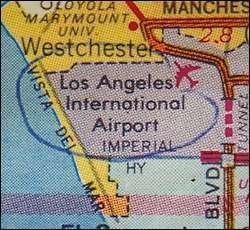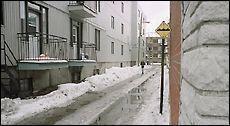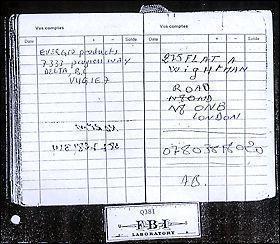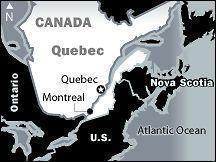 |
 |
|
|||||||
The Mission
There, they came face to face with the most hated of all: the Jews. Orthodox Jews, clad in black, with long beards, curly sideburns, mysterious woven shawls, on their way to and from synagogue.
They could bring a loaded gasoline truck in and detonate it with a bomb planted inside the tank. The devastation would be incredible. Ressam liked Mohamed's proposal. But Ressam had his own, more pressing mission, one endorsed by Abu Zubaydah: He was to attack the United States. He had chosen his target: Los Angeles International Airport. And his deadline — the new millennium — was approaching.
On Aug. 31, Ressam began moving methodically on his assignment. He found his way to a strip mall in the Saint-Laurent neighborhood and walked into Active Electronique, the Canadian equivalent of Radio Shack. He wandered from rack to rack in the electronics section, scrutinizing tiny plastic bags. Finally, he went to the counter and laid out a cornucopia of electronics: wire, solder, circuit boards, capacitors, integrated circuits, 9-volt battery connectors, a soldering gun and several small, black, plastic boxes. Total: $237, charged to Visa.
At this point, Ressam was weighing whether to detonate one or two bombs at LAX — the second to explode as rescuers rushed to the scene of the first. He envisioned killing police and security personnel, icons of U.S. authority. Back at his apartment, Ressam hunkered at a small kitchen table and carefully began to assemble components. He pried off the back of a watch, exposing its circuits. Inside, in one corner, was a tiny speaker that beeped when the alarm tripped. On that speaker were two speck-sized connections. He needed to solder wires to those connections and attach them to a switch that would close when the alarm went off. Current from 9-volt batteries would flow to a tiny penlight bulb. Ressam would sand away the tip of the bulb, exposing filaments. He planned to embed this cheap trigger into a package of high explosives. Ressam turned to an older Algerian, former Montreal roommate Mourad Ikhlef, for advice. Ikhlef had fled Algeria in 1992 just before he was convicted, in absentia, of helping to detonate a bomb in the Algiers airport that killed 11 and injured more than 100. This bombing was notorious as a demonstration that some Islamic terrorists were willing to kill innocent citizens of their own countries to further their cause.
Ressam and Ikhlef decided that the LAX bombs should be placed near a crowded security checkpoint. The detonation would ring in the New Year with a staggering body count.
The Mounties were, at last, making the raid demanded more than five months earlier by French terrorist-tracker Jean-Louis Bruguière. Much to his frustration, though, Bruguière and his investigators were not allowed to join in. As it turned out, the Mounties could have used the help. They entered the tiled foyer of the building and rang the apartment, waiting a moment to see if they would be buzzed in. At the sound of the bell, Ressam bolted from the apartment and out a back door into an alley. The door was unguarded. He got away.
Inside the dingy apartment, police found nine stolen passports, 47 pairs of new bluejeans, two cameras and numerous photographs, including some of Fateh Kamel. They also found a knapsack containing a black address book and scraps of paper with handwritten telephone numbers.
He made a copy of the book and sent it off to Bruguière in Paris to figure out. Back at his own apartment and without his knapsack, Ressam went back to work on his plan. After further consideration, Ikhlef advised against using two bombs at the airport. Security workers were more likely to notice two separate, abandoned suitcases and evacuate the area before detonation. Make one huge bomb and set it to explode in 30 minutes, Ikhlef said. There will be plenty of time to escape. Leave one piece of luggage unattended at various spots in the terminal and time how long it takes for security to notice it. Find the weakest spot.
Ressam accepted the advice, and he went back to work on a bomb. His near encounter with the Mounties had not deterred him in the least.
|
|
|||||||||||||||||||||||||||||||||||||||||||||||||||||||||||||||||||||||||||||||||||||||||||||||||||||||||
|
The Terrorist Within | Reprints seattletimes.com home |




